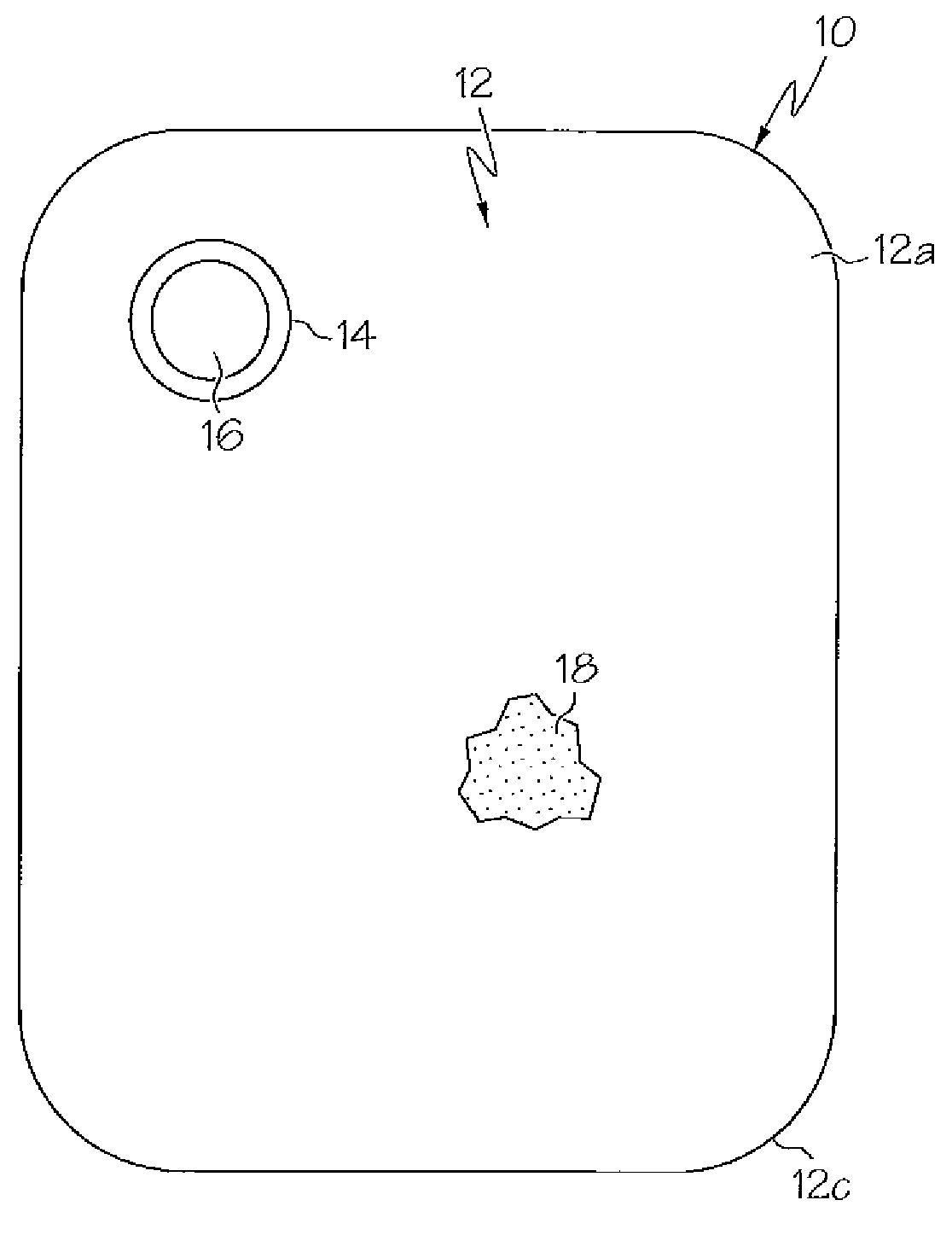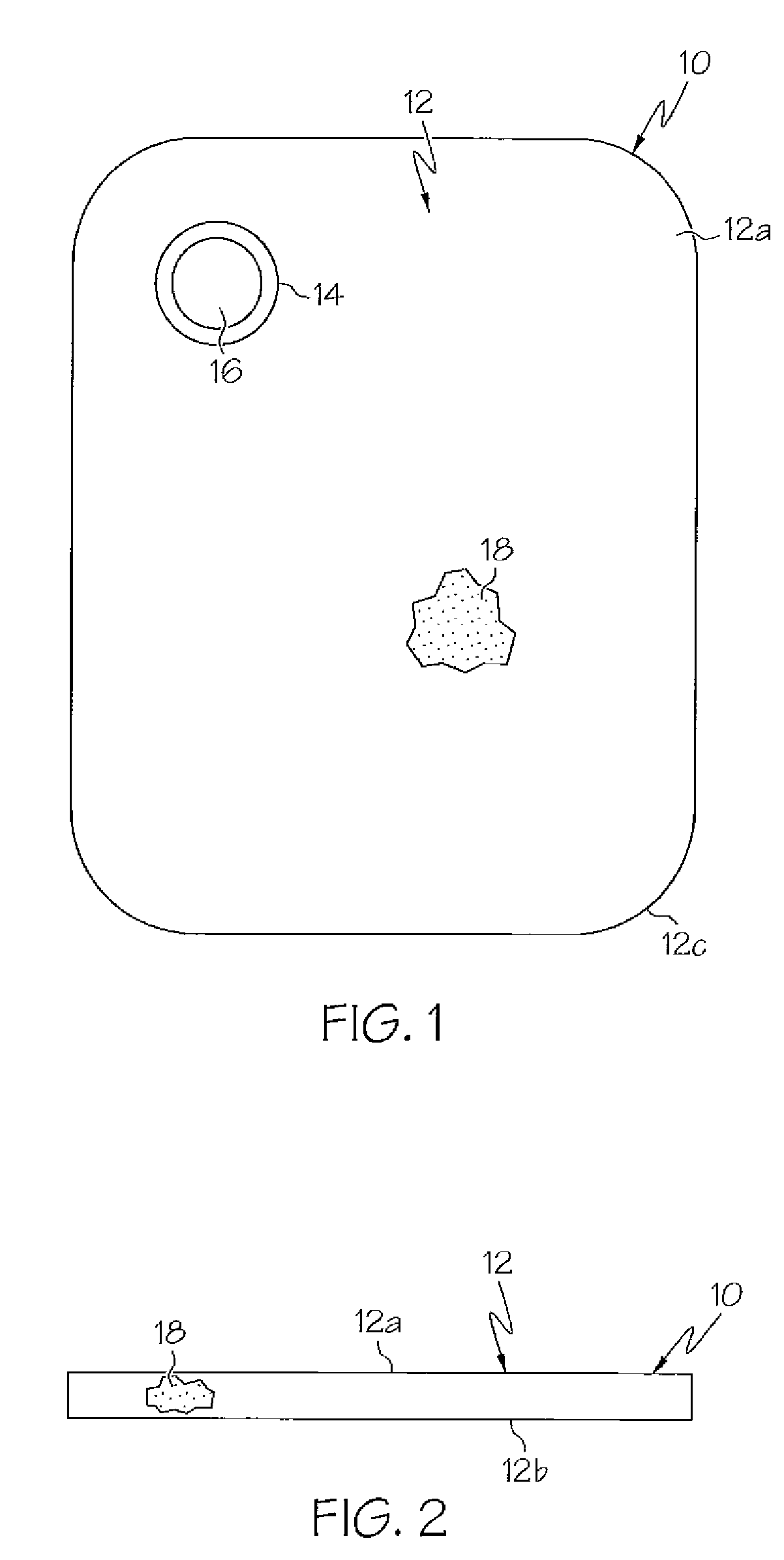Cork cutting board and method of making
a cutting board and cork technology, applied in the field of cutting boards, can solve the problems of low deformation resistance, low porosity of the board used in the manufacture of the board, and high risk of contamination with continued use, and achieve the effects of low porosity, high deformation resistance, and preventing bacteria buildup
- Summary
- Abstract
- Description
- Claims
- Application Information
AI Technical Summary
Benefits of technology
Problems solved by technology
Method used
Image
Examples
Embodiment Construction
[0021]Referring now to the drawings and, in particular, FIG. 1, a top plan view of a cork cutting board 10 is shown. The composite cork material is shown as element 18. The board 10 is made entirely of composite cork 18 described herein. The cutting board 10 is rectangular in shape and manufactured by a process described herein and includes body 12. The body 12 is comprised of a flat a top surface 12a, a flat bottom surface 12b and four linear sides, two of which are generally shorter than the other two. The flat sides are connected using rounded edges 12c. The cutting board body 12 includes a top side cutting surface 12a, a circular aperture 16, and the metal aperture sleeve 14. The top side cutting surface 12a is defined in shape by the linear sides of the cutting board 10. The cutting board 10 is composed of a high density cork composite material. The circular aperture 16 extends through the cutting board 10 and is used for hanging the board on a hook or nail. Objects such as hoo...
PUM
 Login to View More
Login to View More Abstract
Description
Claims
Application Information
 Login to View More
Login to View More - R&D
- Intellectual Property
- Life Sciences
- Materials
- Tech Scout
- Unparalleled Data Quality
- Higher Quality Content
- 60% Fewer Hallucinations
Browse by: Latest US Patents, China's latest patents, Technical Efficacy Thesaurus, Application Domain, Technology Topic, Popular Technical Reports.
© 2025 PatSnap. All rights reserved.Legal|Privacy policy|Modern Slavery Act Transparency Statement|Sitemap|About US| Contact US: help@patsnap.com


